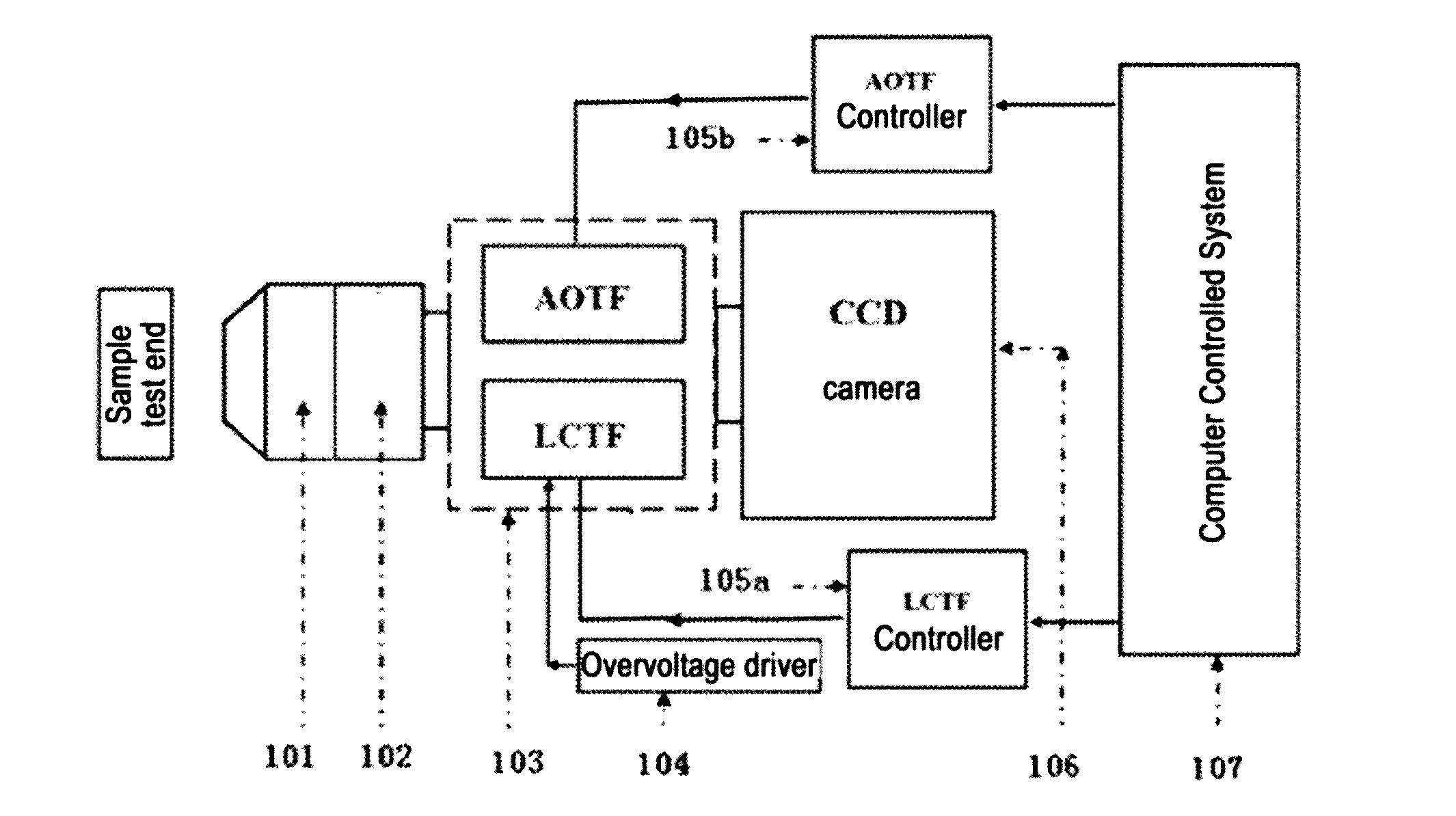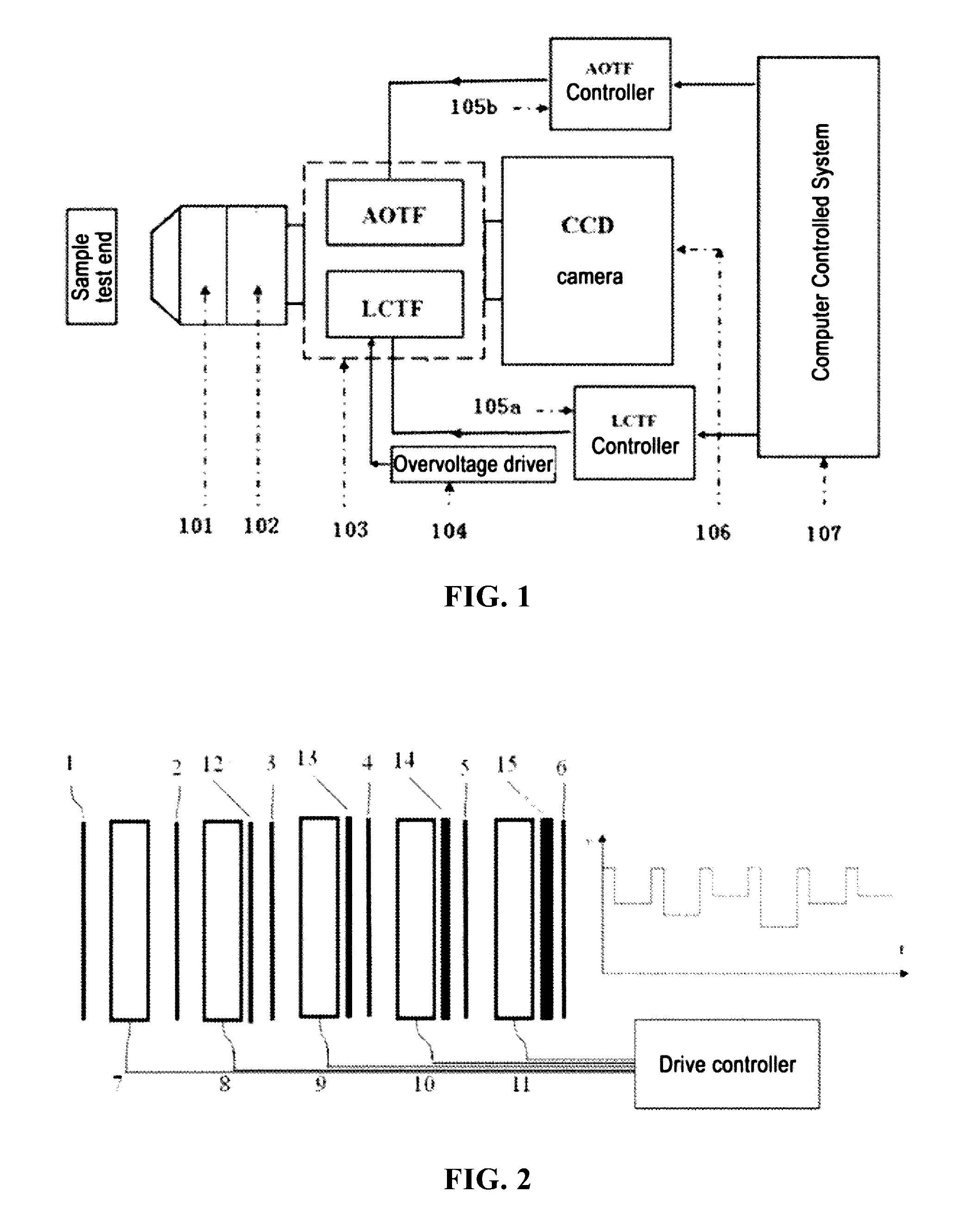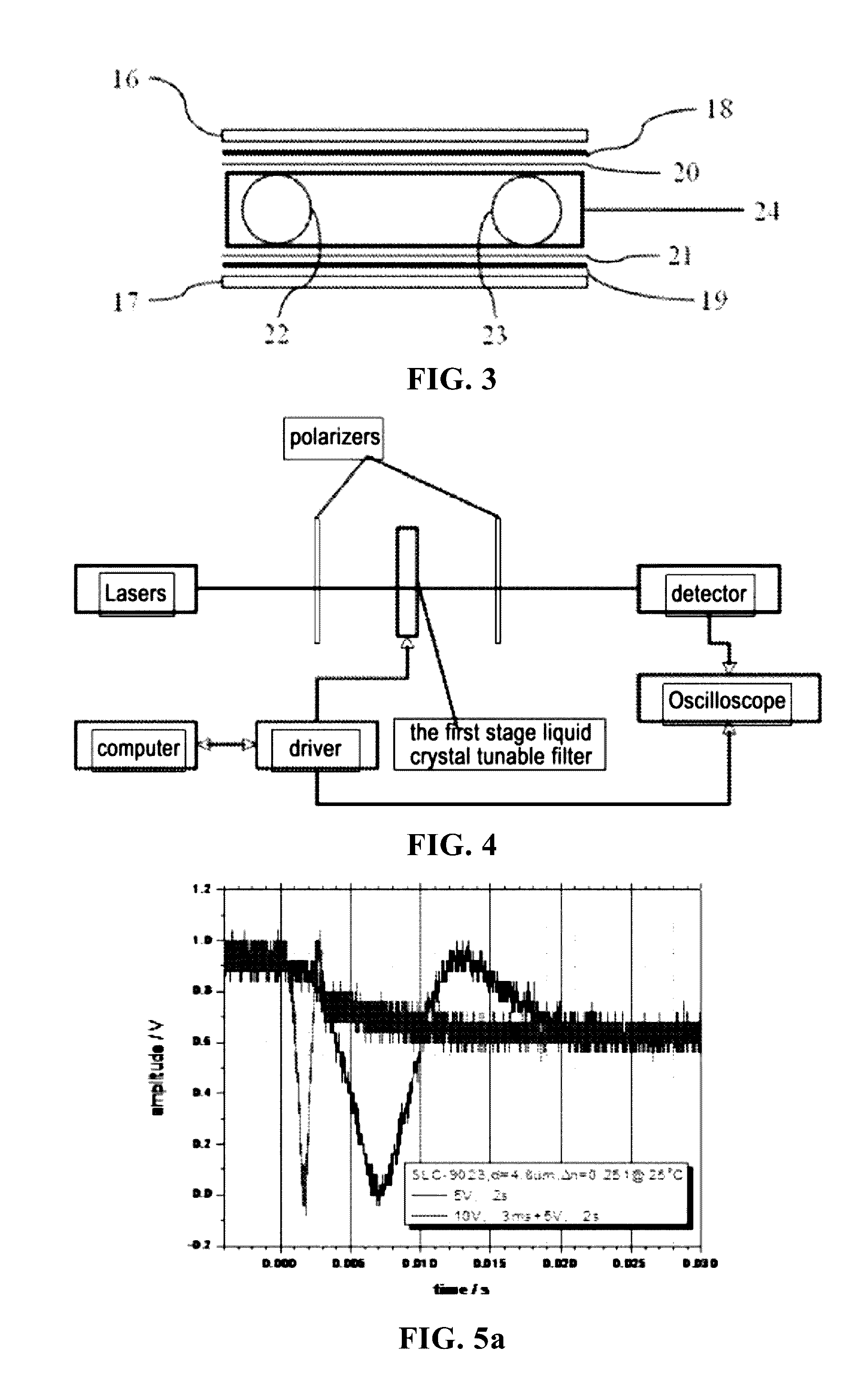Near-infrared spectrum imaging system and method for diagnosis of depth and area of burn skin necrosis
- Summary
- Abstract
- Description
- Claims
- Application Information
AI Technical Summary
Benefits of technology
Problems solved by technology
Method used
Image
Examples
Embodiment Construction
[0054]In order to better illustrate and explain the technique of the present invention and its effects, the present invention is described in further detail below with reference to the drawings and research experiment process of the present invention.
[0055]I. The Clinical Diagnosis System for the Depth and the Area of Burn Skin Necrosis
[0056]The diagnosis system mainly includes the spectral imaging instrument and the computer control system. The structure is shown in FIG. 1, wherein:
[0057]1. The spectral imager: consisting of an illumination light source 101, an optical lens 102, a filter 103 (using a liquid crystal tunable filter LCTF and an acousto-optic tunable filter AOTF), a CCD camera 106, a LCTF controller 105a and AOTF controller 105b and an overvoltage driver 104. They are assembled in the form of a conventional spectral imager. The performance parameters of each component can be selected as follows:
[0058]Liquid crystal tunable filter (LCTF): working band: 900 nm˜2500 nm; s...
PUM
 Login to View More
Login to View More Abstract
Description
Claims
Application Information
 Login to View More
Login to View More - Generate Ideas
- Intellectual Property
- Life Sciences
- Materials
- Tech Scout
- Unparalleled Data Quality
- Higher Quality Content
- 60% Fewer Hallucinations
Browse by: Latest US Patents, China's latest patents, Technical Efficacy Thesaurus, Application Domain, Technology Topic, Popular Technical Reports.
© 2025 PatSnap. All rights reserved.Legal|Privacy policy|Modern Slavery Act Transparency Statement|Sitemap|About US| Contact US: help@patsnap.com



